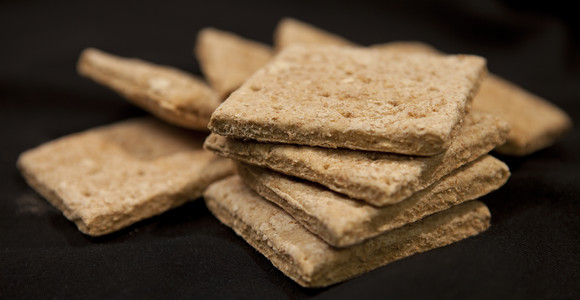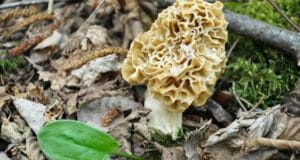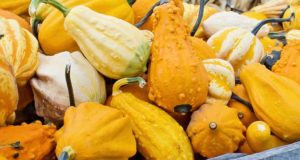When it comes to long-lasting survival foods for emergency situations, most pantries are filled with dried or canned foods and emergency meal kits. These foods tend to last for a few years with proper storage, which is impressive. But did you know there are other foods that can last for even longer — even past your lifetime?
In fact, there are a few stories of certain foods remaining safely edible for upwards of 100 years. While the majority of these claims have been merely anecdotal, there is no doubt that some foods can easily last decades or more under the right conditions.
Here are 3 foods that are easy to make or gather that will easily outlast typical canned or dried survival foods.
Pemmican
Pemmican has a long history as a food that seems to never go bad. This food is a mixture of fat and protein made into a paste and then dried. Think of super tough, calorie-packed fruit leather.
This peculiar jerky-like food was developed by North American Native Americans as a high-energy meal that could be taken on long journeys without spoiling. The idea was passed on to Europeans, who found it invaluable as a protein source by explorers and trappers.
Pemmican isn’t difficult to make and there really is no exact recipe, since traditionally the protein and fat sources that were used depended on whatever the people had. Therefore, modern pemmican’s protein component could be anything from store-bought beef to wild game like deer or moose. There are cases of Natives adding fruits for taste and increased nutritious — although this fancier Pemmican was often used in ceremonies and other significant events.
Emergency Survival Seed Bank Provides THOUSANDS Of Pounds Of Food
You click this hyperlink to go to a modern-day take on a Pemmican recipe. In short, this food is made by crushing previously dried meat (jerky) and mixing it with crushed dried berries and an equal amount of melted fat. Pemmican can be eaten as-is, added to stews or fried up in a pan with vegetables or other foods you may have on hand.
Hardtack
Another food with an interesting history is hardtack (or, hard tack). This cracker-like bread or biscuit was made popular by sailors and soldiers. The idea of baking a hardened bread or biscuit to take on long voyages or treks originated all the way back in ancient Egypt and Rome. In wasn’t until 1667 that hardtack became part of a standard diet for the Royal Navy.
It wasn’t until 1801 when a baker began producing hard tack (called water crackers) in America. These water crackers became a mainstay and also were eaten by troops. There are even hardtack biscuits in Civil War museums today.
Hardtack isn’t a tasty food since it’s just a mix of flour and water, but it did do a good job of keeping soldiers in condition. There are still some companies in the US that make hardtack for Civil War reenactments, and these biscuits can still be found in supermarkets throughout the world.
There isn’t really an expiration date on hardtack but it’s generally believed that if kept in dry, insect-proof containers out of sunlight these crackers can easily last 50-100 years.
Watch the video below to learn how to make it:
If you want a different recipe, then use this one from Parks Canada, which was used by surveyor Major AB Rogers:
- 4 cups flour, preferably whole wheat
- 4 teaspoons salt
- 2 cups water, approximately
Directions:
- “Preheat the oven to 375°F | 190°C.
- “Mix the flour and salt together in a bowl. Add enough water − possibly less than two cups − to ensure that the dough sticks together without sticking to your hands, the rolling pin or the pan. Mix the dough by hand.
- “Roll the dough out, shaping it roughly into a rectangle. Cut into the dough into 12 squares about 3 x 3 inches and ½-inch thick. After cutting the squares, press a pattern of four rows of four holes into each square, using a nail or other such object. Do not punch through the dough. The appearance you want is similar to that of a modern saltine cracker. Turn each square over and do the same thing to the other side.
- “Place the squares on an ungreased cookie sheet in the oven and bake for 30 minutes. Turn each piece over and bake for another 30 minutes. The crackers should be slightly brown on both sides.”
And finally …
While not a meal by itself, honey is a great addition to a survival diet for a number of reasons. Not only is raw honey great for the body internally (and the taste buds!) but it also performs double-duty as a natural healing salve. Unfiltered raw honey in its most natural state boosts the immune system, provides antibacterial and antifungal protection, and is loaded with various minerals, vitamins and antioxidants.
The Easiest Way To Store A Month’s Worth Of Emergency Food!
It cannot be stressed enough that these numerous benefits and longevity apply to only raw honey. Honey that has had additives added or has been heated to a high temperature doesn’t offer the same benefits. Some supermarkets or health stores will sell unprocessed, raw honey, but you can always find an apiary where you can buy your honey straight from the source.
For best results, honey should be stored in a cool, dry place in mason jars with secure lids. Ideally, the honey should be kept at room temperature but this only helps prevent crystallization. Raw honey is one of the only foods, if not the only one, that has no expiration date. A jar of honey was unearthed that was more than 5,000 years old and still deemed fit for human consumption!
Other foods with tremendously long expiration dates include sugar, raw maple syrup, white rice, beans, ghee and bouillon cubes. Even if you have a garden and livestock in the event of an emergency, stocking up on true survival foods will ensure you get plenty of variety during hard times.
What foods or advice would you add to the list? Share it in the section below:
Discover The Secret To Saving Thousands At The Grocery Store. Read More Here.
 Off The Grid News Better Ideas For Off The Grid Living
Off The Grid News Better Ideas For Off The Grid Living





